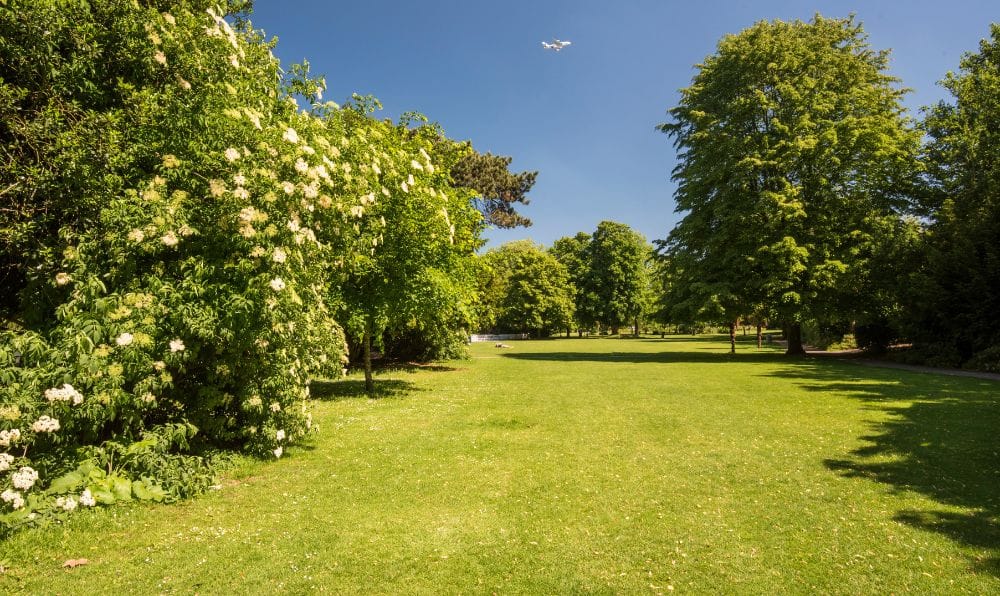Here’s What to Look For
Moving home is more than just a change of address - it’s a change of community, routine, lifestyle, and security. Whether you’re a first-time buyer, a renter relocating, or simply looking for a fresh start, choosing the right neighbourhood matters just as much as choosing the right property. In fact, the neighbourhood often has a bigger long-term impact on your happiness, finances and day-to-day life than the house itself.
This post will walk you through all the key factors to evaluate when choosing a new neighbourhood in the UK: from safety and noise, to transport, schools, costs, future developmentand how to tie it all together into making an informed decision.
1. Safety First
When you move home, your sense of safety will influence whether you feel comfortable, relaxed and at ease. Here’s how to assess safety in a new area.
Talk to local people
Online forums, local Facebook groups, neighbours, and local shop owners can tell you things you won’t get in statistics—how safe residents feel, what kind of incidents happen (night-time noise, anti-social behaviour, burglaries) and how quickly the community reacts.
Visit the area at different times
Don’t just visit during daylight hours. Pop by in the evening or early morning to check how bright the street lighting is, whether there are signs of vandalism, how many people are around, how safe the cut-throughs feel.
Check for neighbourhood community initiatives
Strong community networks, like neighbourhood watch schemes or active residents’ associations, can be an indicator of a neighbourhood looking after itself.
2. Noise Levels & Ambience
While much of the decision-making emphasises big factors like schools or transport, noise and the day-to-day ambience of a location are often overlooked. Yet they significantly affect your comfort, sleep, stress levels and quality of life.
What to listen for
- Traffic noise (main roads, dual carriageways, flyovers)
- Railway lines or metro/tram lines overhead
- Service stations, warehouses, night-time businesses/clubs
- Audible neighbours (if flats/terraced houses) or commercial premises nearby
- Construction or future building sites (which might start after you’ve moved in)
When to check
Visit the area at:
- Peak time (rush hour)
- Late evening/night
- Early morning (to check things like bin-collections, delivery trucks)
If you’re after peace and quiet (for example with children, or you work from home), then quieter residential streets, cul-de-sacs, or homes with good sound-insulation will be preferred.

3. Neighbourhood Character & Feel
What to evaluate
- Lifestyle fit: Are there families, young professionals, retirees? Does that align with you?
- Vibe of the area: Are there local cafés, independent shops, good pubs, green spaces? Or is it more suburban, residential and quiet?
- Future you: If you are single now but planning a family later—or downsizing later - does the area evolve accordingly?
- Community engagement: Are there local events, residents’ groups, community centres, parks with gatherings? A strong sense of community tends to make a neighbourhood more pleasant and safe.
Walk around
Stroll streets and side roads. Do local people look like they’re out and about? Are there dogs walked, kids at play, people chatting outside? If the area looks lifeless, it may lack community.
4. Proximity to Work & Key Amenities
How reachable your essential places are from home to work, school to supermarket - matters a lot. A poor choice here can silently erode your free time, increase stress, and knock your budget.
Commute
- How long is the commute to your work (or potential work)?
- What transport options exist (car, train, bus, bike)?
- Are there traffic hotspots or bottlenecks?
- If working from home, is the neighbourhood conducive to remote working (quiet, good internet, comfortable space)?
Amenities
- Grocery stores, supermarkets: how far? Are they convenient?
- Medical facilities: GP, dentist, pharmacy, hospital access.
- Schools (if relevant).
- Public services: post office, library, community centre.
- Leisure & recreation: gyms, parks, restaurants.
Convenience vs. cost
Sometimes more convenient areas cost more. For example if you’re closer to a city centre or transport hub, expect a price premium. So consider the trade-off: a longer commute might be acceptable if the neighbourhood fits you better in other ways.

5. Public Transport & Connectivity
Good connectivity doesn’t just reduce your commute; it adds flexibility, reduces car dependency, and can make your life smoother overall.
What to check
- Are there nearby bus stops, train stations, tram lines?
- How frequent are the services? Early morning / late night?
- How long to major destinations (work, city centre, airport)
- If you drive: what’s parking like? Is there dedicated parking? Are there permit zones?
- For cycling/pedestrian: are there safe cycle lanes, footpaths, lighting?
Future proofing
Good transport links are also good for resale value. If you buy in an area with great links, it’s easier to sell later on or attract renters (if you ever move out).
6. Schools & Education
If you have children now - or are planning to in the future - the educational quality of the area will be a top concern.
🎓 What to look at
- School performance: Ofsted ratings, exam results, local league tables.
- Diversity of schooling: primaries, secondaries, special schools.
- Availability of extracurriculars: sports, music, clubs.
- School catchment boundaries: these may shift, and houses within desirable boundaries often cost more.
- Reputation: talk to local parents, check community forums for feedback.
7. Green Spaces, Parks & Outdoor Lifestyle
Access to green space is increasingly recognised as key to wellbeing: mental, physical and social. If you value running, walking, cycling, spending time outside, this matters.
What to check
- Are there parks, recreation grounds, playgrounds nearby?
- Are the green spaces well maintained, safe, busy or quiet?
- Are there cycle paths, walking trails, sports fields?
- Proximity to countryside or rivers, if you value nature and outdoor time.
Why this helps
Living near pleasant green space can: reduce stress, encourage exercise, improve mood, give children safe outdoor places, enhance neighbourhood feel.
It also helps resale and rental attractiveness: studies have shown higher value attached to properties near parks.

8. Cost of Living & Your Budget
Choosing a great neighbourhood is one thing; affording it is another. Make sure your desired area aligns with your financial reality.
What to consider
- Average property prices or rents in the area (for your type of home)
- Council tax bands - these vary significantly across UK local authorities
- Utility bills, insurance, service charges (flats)
- Commuting/transport costs if further away from work
- Daily living costs: food, shopping, leisure all may differ by region
Realistic budgeting
Be sure to factor in not just the house cost, but all the extras. A cheaper home far from amenities might cost more in transport/time. A home near great schools may command a premium. Decide your “must-haves” vs “nice to haves” and how they fit into your budget.
9. Future Development & Long-Term Prospects
When buying (or even renting), thinking about tomorrow is just as important as today. Developments around the area can improve or degrade your experience and property value.
What to check
- Local council’s replacement plan or neighbourhood plan: new housing estates, roads, industrial builds
- Upcoming transport projects (new train/metro line, station)
- Commercial developments (shopping centre, business parks)
- Zoning changes (which might mean new high-density housing, busy roads)
- Environmental risks: flood zones, noise corridors, planned infrastructure
Why this matters
Good development can increase value: added amenities, better transport, higher demand. But negative development (noisy roads, large commercial builds, over-densification) can lower desirability and quality of life.
Summary: Choosing the Right Neighbourhood
At the end of the day, a “great neighbourhood” for you is one where you can feel comfortable, safe, and at home - not just now, but tomorrow; one that supports your day-to-day needs and your life trajectory.
Remember: the house matters but the ‘place’ you live in often matters more for your quality of life and long-term satisfaction. Good luck with your house-hunting journey!


